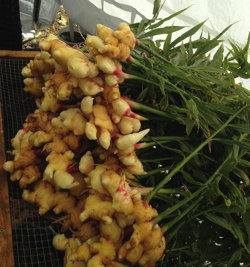(120 days)
Available for shipment in late February only.
This spunky little superfood adds ebullient golden color to curries and sauces. Anti-inflammatory, antiseptic, antioxidant, anticarcinogenic—better get that high-tunnel built!
Locally grown turmeric is following in ginger’s footsteps as more northern growers and gardeners are giving it a go. Lighter yields than ginger, but restaurants and farmers’ market customers will pay top dollar. Blend fresh turmeric and local wildflower honey into gently warmed whole milk for a delicious restorative tonic.
One pound can be cut into approximately ten to fifteen seed pieces. Ships late February, or as soon as weather permits.
Need fertilizer? Reach for our RhiZoom Ginger & Turmeric Mix.
Supplier Transparency:
② Family-owned companies or cooperatives, domestic and foreign







